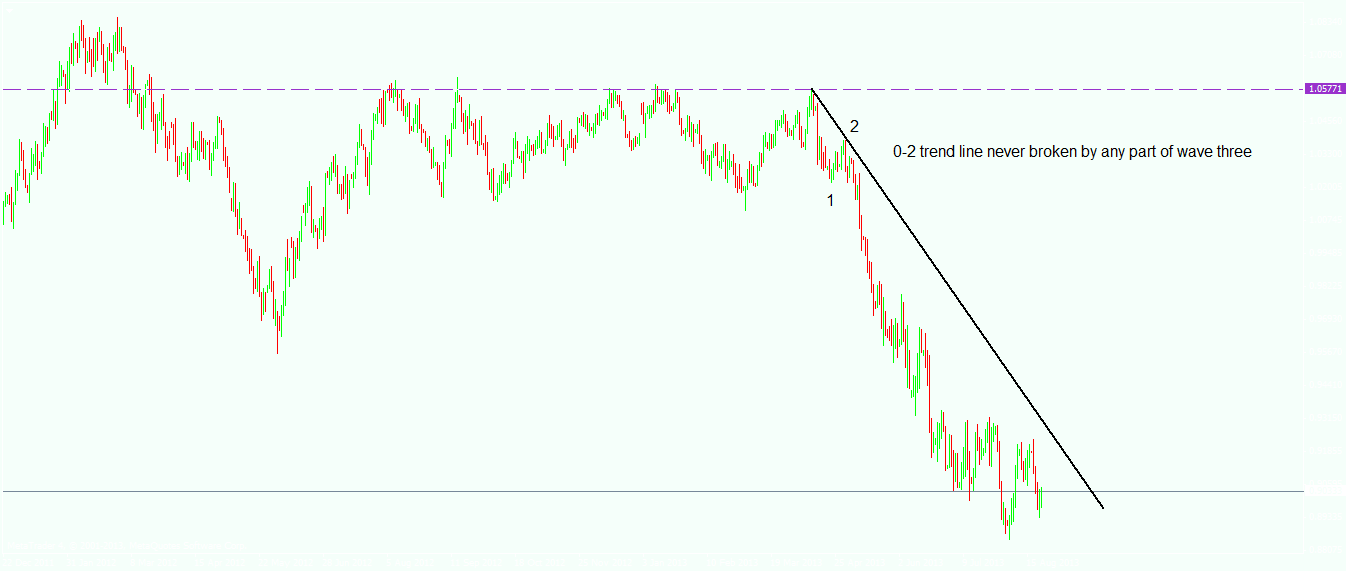How to Treat Channeling When Trading With Elliott Waves
Elliott Waves theory is based on counting waves of different degrees (cycles, super cycles, etc.) and the basic interpretation of the theory is that any five waves move to the upside/downside should be corrected with a three waves opposite move. However, it is not that simple as each and every wave out of the five and three ones mentioned above are being formed out of another five and three wave’s sequence, of a lower degree, and this is where the complexity/difficulty in counting waves with the Elliott Waves theory appears.
One of the most important things to take into consideration when counting waves using the Elliott Waves Theory is channeling. It gives you clues about how to interpret one move (impulsive or corrective) and should keep one safe regarding the end of a specific move (again, impulsive or corrective). In the first instance, looking at a possible impulsive move and drawing a trend line from the beginning of the move and through the end of the second wave, it should be considered that no part of the third wave should violate this line, if this is correctly drawn. This is showing that the move is truly impulsive and the labeling was correctly made. The picture below shows exactly such a case with the 0-2 trend line acting as a confirmation for an impulsive move.
Moreover, after the fourth wave is completed, drawing a 2-4 trend line, and then a parallel line from the end of the first one should give us the possible end of the fifth wave, regardless if the fifth wave is a failure or not. And this is where channeling comes into discussion, as just drawing a parallel line we’re having a channel that allows us to have an educated guess about the possible end of the impulsive move.
Another way to look at channeling is to take into consideration the moment when the 2-4 trend line is broken, as if the counting is correct, the break of this trend line suggests the five waves up/down structure is done and the corrective phase begins.
Channeling is an important aspect in the Elliott Waves Theory as many traders are mistakenly counting waves as being impulsive when one simple characteristic should make them think twice. And this characteristic is, you guessed, channeling. If price channels too well and corrections are almost the same, than what you are looking for is not an impulsive move, but a corrective one, and this corrective move usually takes the form of a complex correction, a double or triple combination, double or triple correction, double or triple zigzag, etc. The image below shows you just such an example in which price is channeling too well, corrections are almost the same, and, in this case, price is ending with a contracting triangle that it is acting as a reversal pattern (in the sense that price is breaking in the opposite direction than the direction it entered the pattern in the first place). This is just a confirmation of the fact that the correction is a complex one, as almost always double or triple combinations are ending with contracting triangles that end up to be reversal patterns. And again, as you can see in this example too, channeling helps in understanding the true nature of the move.
In conclusion, when counting waves based on Elliott Waves Theory, channeling should be taking into consideration as it helps a trader both to establish the boundaries of an impulsive move, and to recognize corrections when everybody else is looking for impulsive moves.
Written John from Forex Brokers Reviews,
a resource you can check out if you are looking for honest reviews of the most popular FX brokers.


